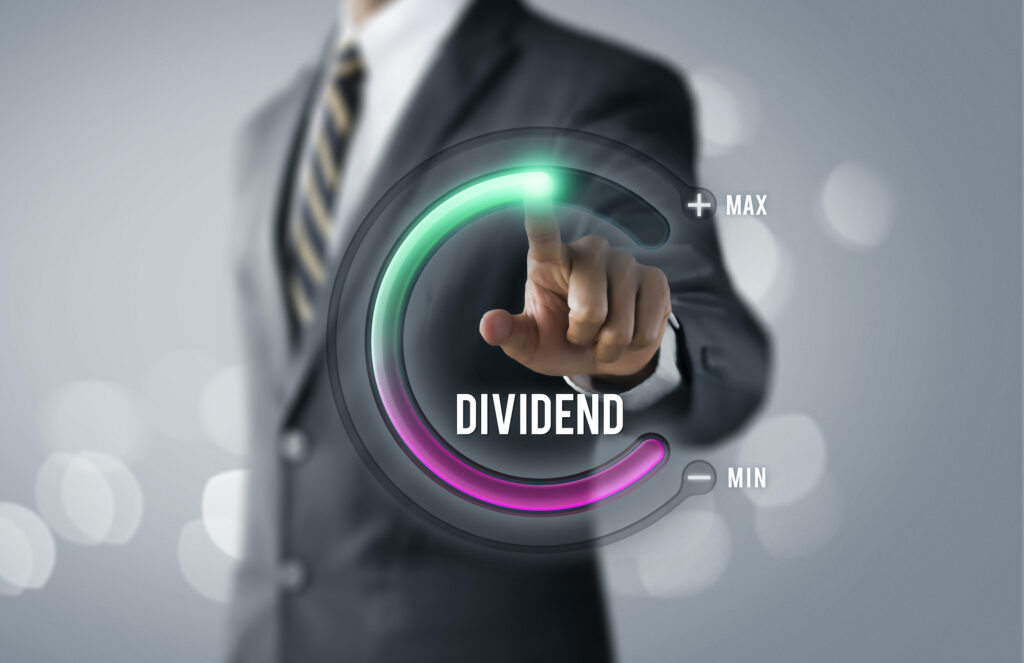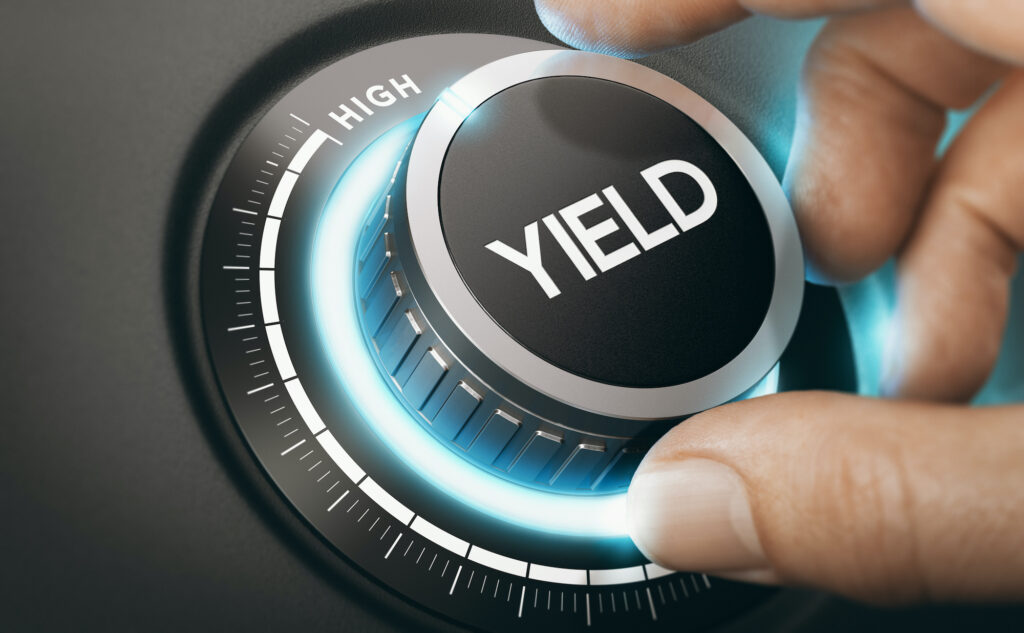
All investors have different goals. Some are simply Wall Street hobbyists, while others are future retirees who want to store up a nest egg.
On top of letting you enjoy the thrill of the trading floor and save for the future, a dividend investing portfolio can provide you with a stable source of income as well.
But how do you know which are the best dividend stocks? What’s the key to finding high-quality, high-yield investments?
It all starts with educating yourself on what to look out for when selecting high-yield dividend investments.
We’ll walk you through which metrics to consider when building your dividend portfolio and introduce you to an asset class you may have overlooked.
The Metrics You Need To Choose the Best Dividend Stocks
Familiarizing yourself with crucial dividend metrics will set you up for success when researching quality dividend payers. Below, we will discuss four metrics that will help you on your dividend investing journey.
Dividend Yield

Investor’s looking for high-yielding dividend income should most definitely pay attention to the dividend yield. It’s the best predictor of a company’s financial health and confidence about its performance.
Dividend yield represents a company’s annual dividend payments divided by its per share stock price. Let’s look at a simple example.
You are researching stocks, and you come across one priced at $25 per share. It pays out $3 in dividends per share. That would come out to a double-digit dividend yield of 12%.
How does that stack up in the world of dividend investing? High-yield income investors should aim for a dividend yield over 4%. So this imaginary stock would fit the bill.
High dividend yields are a strong indicator that a company is undervalued, which means it’s selling on the stock market below its intrinsic value. Intrinsic value is the stock’s actual value based on its fundamentals and may be different from its current trading price. If a stock seems undervalued, this translates to high growth potential in the future.
An example of a high dividend yield stock is Enterprise Products Partners (NYSE:EPD). As of January 2021, the share price is $22.94. It currently pays out $1.78 per share annually, which means it has a dividend yield of 7.76%. That’s high enough to provide you with a stable income.
Free Cash Flow
Checking out a company’s fundamentals, such as free cash flow, is crucial when searching for income-producing dividend stocks.
When a company reports its earnings, it includes an income statement, a balance sheet, and a cash flow statement. The cash flow statement is where you will find operating, investing, and financing activities, such as dividends paid.
After financing activities, total free cash flow is calculated, which is where your attention should be focused.
When reviewing the company’s earnings report, you want to ask yourself these two questions:
- In the past five years, has the company generated cash flow and remained on its trajectory?
- How well does the company manage its cash through operations and investing activities?
Companies pay dividends out of cash. As the investor, you should make sure the company is consistently generating enough free cash flow to pay the dividend.
Taking a look at an example, China Petroleum and Chemical Corporation (NYSE:SNP) is in the oil and gas industry. They pay a 6.8% dividend yield. Looking at their cash flow statement, they had consistent positive free cash flow in consecutive years from 2016 to 2019, which shows they have a reliable dividend.
Dividend Growth
Dividend growth refers to how much the company grows its dividends on an annual basis based on healthy cash flows.
One place to look for dividend growth is in the list of Dividend Aristocrats. These S&P 500 companies have a history of consistent dividend increases and payouts.
Once a company starts increasing its dividend, it’s motivated to keep the trend moving. Companies know that a decrease in their dividend could lead to a sharp sell-off in the market, whereas dividend-paying stocks tend to have less share price volatility.
Most investors love to look ahead to the future to try to predict how well the company will perform. However, you must look to the past when it comes to dividend investing to see if the dividends grew over time.
Taking a look at one company called Enbridge (NYSE:ENB), they pay a superior dividend yield of 8.1%. If you look at its dividend history, the company has grown its annual dividend 53% from 2016 to 2020.
Dividend Payout Ratio
Taking into account the safety of your dividend is crucial, which is why the dividend payout ratio is an important metric.
The dividend payout ratio measures how much of a company’s profits, or net income, are paid out in dividends. To figure out the dividend payout ratio, take the dividends paid per share and divide it by the EPS, or earnings per share.
For example, Community Trust Bancorp (NASDAQ:CTBI) reported its earnings for the past year on January 20, 2021. Its dividends per share was $1.53, and its EPS was $3.35. By dividing $1.53 by $3.35, you can calculate CTBI’s dividend payout ratio, which was 45.67% for the year 2020.
How can you interpret this metric? It means for every dollar Community Trust earns in net income, 48% is returned to investors as dividends.
But, watch out for very high payout ratios. A payout ratio of 57% or higher means the company is out of balance. It’s returning too much capital to its shareholders and not reinvesting earnings back into the business.
If a payout ratio is too low, it could indicate a weak dividend yield. Any dividend payout ratio between 20% and 57% is ideal.
Closed-End Funds: An Asset Class With Attractive Dividends
There are certain asset classes that payout massive dividends for investors looking for income. One asset class with an excellent track record of success with regular investors and those looking ahead for retirement is closed-end funds.
Closed-end funds sell a fixed number of shares during its initial public offering. After the sale of shares, it never reopens the fund to sell more shares. CEFs can be bought and sold on an exchange throughout the day.
This makes them similar to exchange-traded funds (ETFs), but there are a couple differences. While ETFs are passively managed, meaning they operate on auto-pilot, closed-end funds are actively managed by portfolio managers who make the asset allocation decisions.
Another prime difference is that CEFs trade below the value of the assets they hold. This means investors can buy these assets at a discount. For example, if a fund is trading at $15 per share with a $20 net asset value, it is trading at a 25% discount.
When it comes to dividends, closed-end funds can produce substantial income for dividend investors. This is because closed-end fund managers use a lot of leverage, or borrowed money, to increase returns.
One example of a closed-end fund is Cornerstone Total Return Fund, Inc. (NYSEAMERICAN:CRF), which invests in technology companies. As the name suggests, the fund’s goal is total return and share price appreciation. This fund includes technology stocks such as Microsoft (NASDAQ:MSFT), Apple (NASDAQ: AAPL), and AT&T (NYSE:T). It pays a whopping 16.7% dividend yield!
Are You Ready To Start Your Dividend Journey?
Selecting the crème de la crème of dividend stocks starts with educating yourself as much as possible.
Choosing stocks with a healthy dividend yield will ensure you receive that extra income. Then, turning to a company’s fundamentals can give you a reliable picture of how they pay back shareholders through free cash flow.
The company that grows its dividends annually or every couple of years is another metric you now have in your toolbox. However, you also want to confirm that your dividend is safe, so it’s crucial to select dividends with a dividend payout ratio of 57% or less.
Now that you have a solid understanding of dividend metrics, you’re one step closer to finding the best dividend stocks for your portfolio. The ones that will give you cash — so you can pay bills, stay retired, or weather any financial crisis. To learn about three stocks that could be the backbone of your retirement if you buy and hold them forever, subscribe to Investors Alley’s “Dividend Hunter” newsletter.





